Ruffner Memorial Park
Introduction
Text-to-speech Audio
Images
Kanawha Riflemens Memorial Park
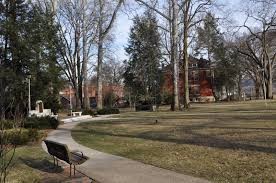
Original Layout of Ruffner Cemetery. http://www.mywvhome.com/1900s/parks.html
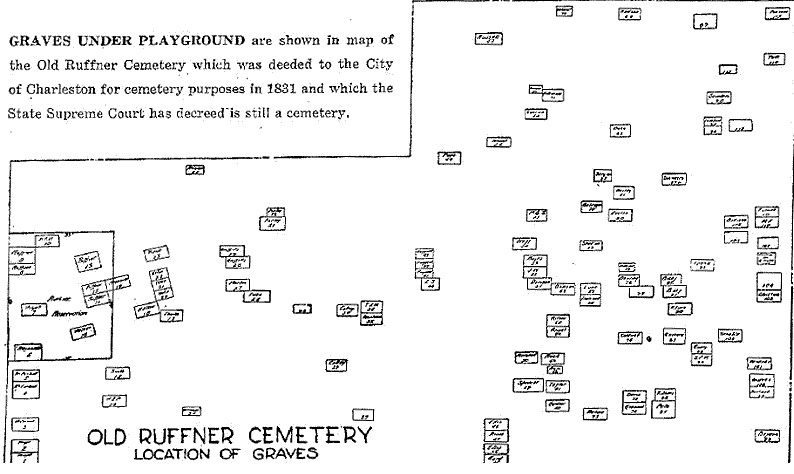
A close view of the Memorial.
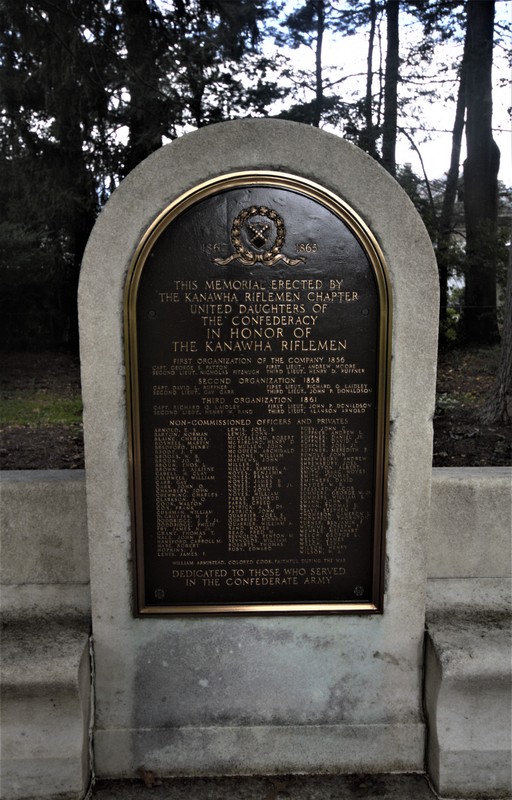
A wider view of the memorial, which resides at the center of the park.
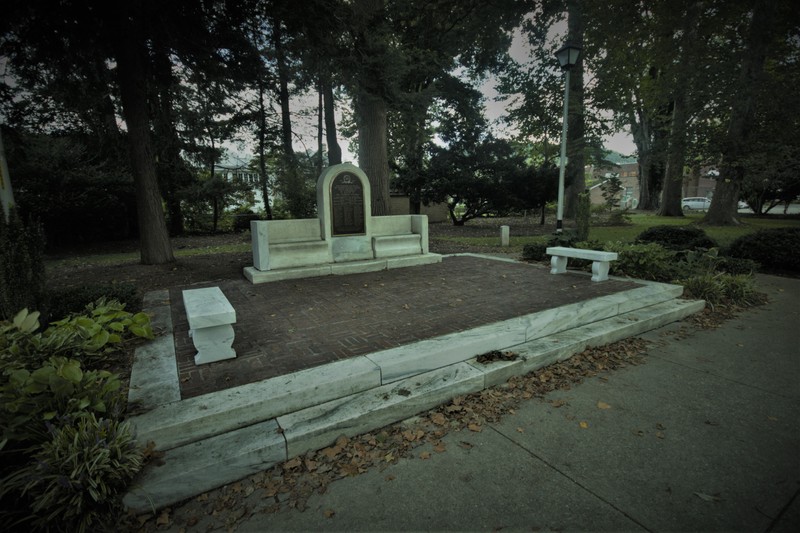
A plaque containing more detailed information about the Kanawha Riflemen, located across the street overlooking the Kanawha River.
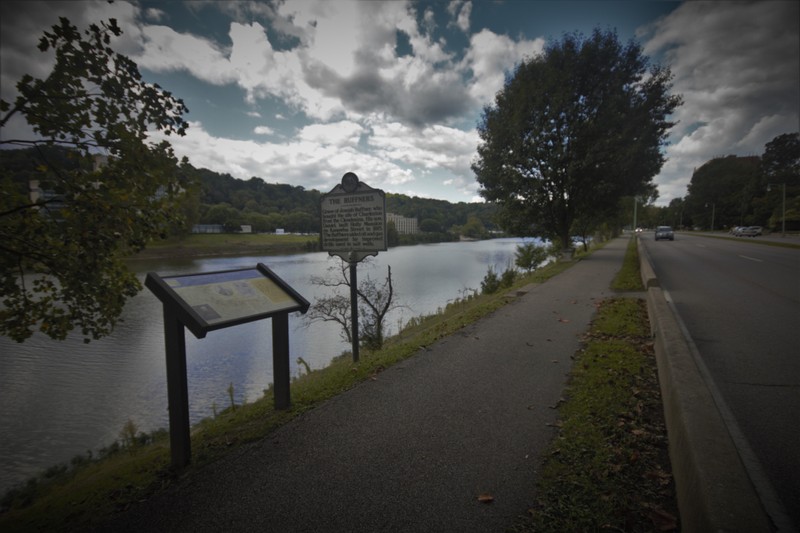
The first order issued to the newly-mustered Kanawha Riflemen by Colonel Patton
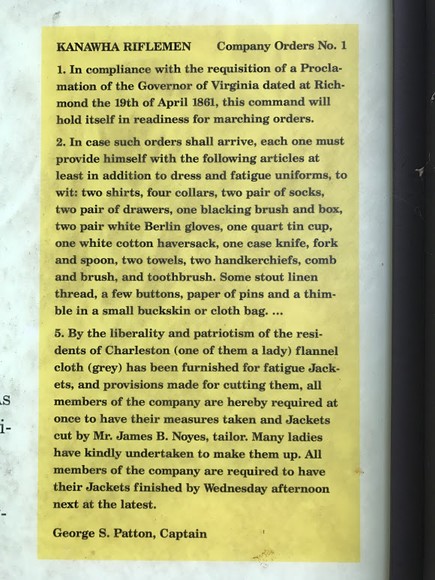
Officers of the Kanawha Riflemen at the end of the war.
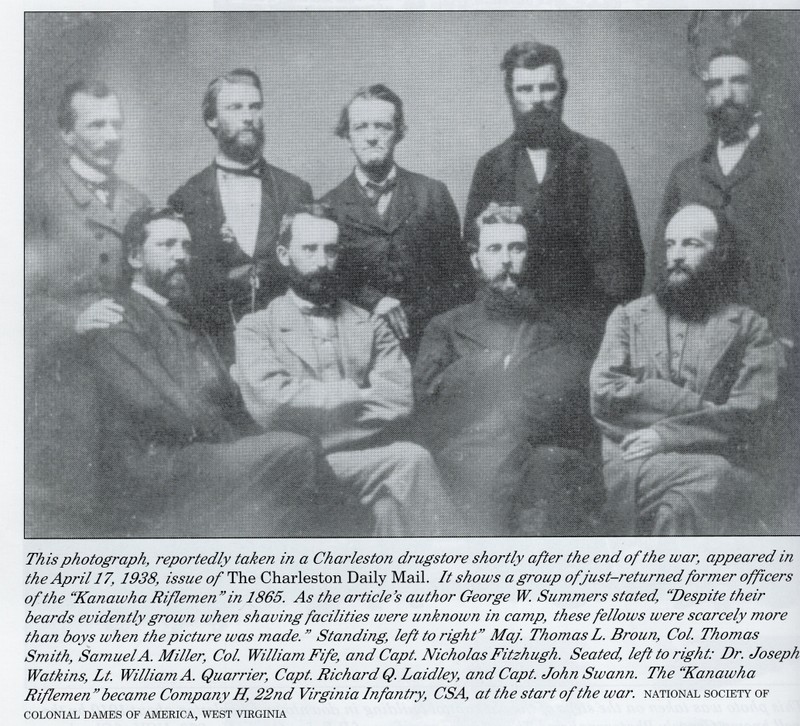
Kanawha Riflement Monument with the plaque removed
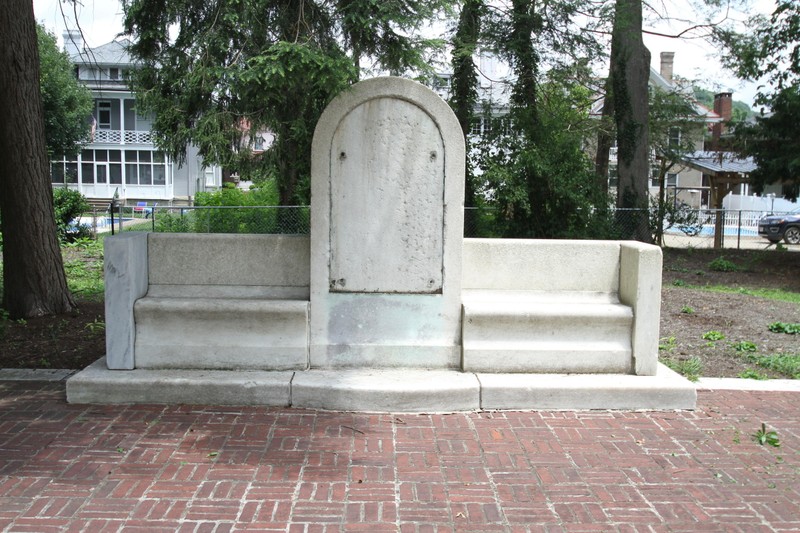
Backstory and Context
Text-to-speech Audio
Ruffner Memorial Park (also known as Kanawha Riflemen Memorial Park) began its life as the Ruffner family cemetery in the 19th century. When the city of Charleston was looking for the site of a new city park in 1920, they decided upon the old Ruffner Cemetery, which had been purchased from the Ruffners for a city burial ground in 1831. Some of the graves were moved to Spring Hill Cemetery, but for others "the tombstones were each carefully laid on top of the graves of the owners they describe and then covered with earth and sod."[1]
Indeed, the park contains the tombstone of Thomas Bullitt, a Colonel of Virginia militia during the American Revolutionary War. Though he died early in the war, in 1778, he served at the Battle of Great Bridge and the burning of Norfolk. He attained his high rank quickly due to previous service in the French and Indian War, despite George Washington's low opinion of him: "Bullet (sic) is no favourite of mine, & therefore I shall say nothing more of him, than that his own opinion of himself always kept pace with what others pleas’d to think of him—if any thing, rather run a head of it."[4] Land originally belonging to Thomas Bullitt would be sold by his brother after his death. This land would soon become the nearby site of Fort Lee and the city of Charleston.
Soon after the new city park's inception, a memorial to the Kanawha Riflemen--a locally raised militia company which fought for the Confederacy during the Civil War--was dedicated on the site.
George Smith Patton, a Richmond native and 1852 graduate of Virginia Military Institute, organized the Kanawha Riflemen after moving to Charleston in 1856. (George Patton was the grandfather of WWII General George S. Patton). By 1861, the Riflemen numbered between 75 to 100 members. The Riflemen counted some the city's most prominent figures among their ranks, including lawyers and salt barons. They were sympathetic to the South as conflict loomed on the horizon, and the company's members reportedly owned over 200 slaves.
In April of 1861, the Civil War erupted as Confederate forces fired on Fort Sumter in South Carolina and President Abraham Lincoln requested 75,000 soldiers to put down the rebellion. In response, the Riflemen passed a resolution: "we, the Kanawha Riflemen, hereby declare it to be our fixed purpose never to use our arms against the State of Virginia, or any other Southern State, in any attempt by said administration to coerce or subjugate them; and we hold ourselves ready to respond to every call that may be made on us to defend our State and section from hostile invasion."[5]
In 1861, United States troops moved up the Kanawha River in 1861 to secure Charleston. Led by Patton, the Riflemen and other Confederate forces engaged Union troops at Scary Creek, on July 17, 1861. During the brief but bloody skirmish, Colonel Patton was wounded in the shoulder, though he continued to serve until his death at the Third Battle of Winchester in September 1864.
The Kanawha Riflemen were eventually mustered into the Confederate army as Company H of the 22nd Virginia Infantry, which hailed from several western Virginia counties (the united was sometimes referred to as the 1st Kanawha Regiment). They held a distinguished fighting record that included several West Virginia engagments, including Carnifex Ferry and Droop Mountain (where the regiment suffered 21% casualties).
Not long after the creation of Ruffner Park, the United Daughters of the Confederacy commissioned a monument to the Kanawha Riflemen. It was dedicated on the site in 1922 and later donated to the city. Former Confederate General John McCausland, the second-to-last surviving Confederate general, was guest of honor at the dedication. The monument, shaped like a long bench, held a bronze plaque in its center containing the names of the Riflemen's members.
Notable in the inscription of names on the monument was "William Armistead, colored cook, faithful during the war." This is in keeping with many Confederate monuments commissioned in the first half of the 20th Century, which sought to recast the image of Black slaves and servants in a manner that reflected positively on their subservient position under the Confederacy. At memorials more well-trafficked, this often caused outcry and controversy, as in the case of the Heyward Shepherd Memorial in Harper's Ferry.
On June 29, 2020, amidst nationwide debates over Confederate monuments, the City of Charleston removed the bronze plaque from the Kanawha Riflemen monument. The city took the statue down with little announcement or fanfare. As Mayor Amy Goodwin noted of the plaque's reference to William Armistead, “It perpetuates the falsehoods that slaves enjoyed being slaves and preferred not to be free. It’s offensive. It needed to be removed. And we removed it.” The Sons of Confederate Veterans protested the removal, calling it "secretive."[7] The city determined to replace the plaque with a new one explaining the history of the park.
Sources
1. Waters, Jerry. "City Parks: When Children Danced on Graves." My West Virginia Home in Photos. 2013. Web. Accessed July 1, 2020. http://www.mywvhome.com/1900s/parks.html
2. Andre, Richard A. "Kanawha Riflemen." October 7, 2010. e-WV: Encyclopedia of West Virginia. Web. Accessed July 1, 2020. https://www.wvencyclopedia.org/articles/1120
3. Lowry, Terry and Stan Cohen. Images of the Civil War in West Virginia. Charleston, WV. Quarrier Press, 2000.
4. “From George Washington to John Augustine Washington, 31 March 1776,” Founders Online, National Archives, last modified June 29, 2017, http://founders.archives.gov/documents/Washington/03-03-02-0429. [Original source: The Papers of George Washington, Revolutionary War Series, vol. 3, 1 January 1776 – 31 March 1776, ed. Philander D. Chase. Charlottesville: University Press of Virginia, 1988, pp. 566–571.]
5. "Meeting of the Kanawha Riflemen." April 23, 1861. Kanawha Valley Star. Web. Accessed via Child of the Rebellion: An Archives and History Sesquicentennial Project. July 1, 2020. http://www.wvculture.org/history/sesquicentennial/18610419.html
6. "22nd Regiment, Virginia Infanty (1st Kanawha Regiment)." National Park Service. Web. Soldiers and Sailors Monument. Accessed July 1, 2020. https://www.nps.gov/civilwar/search-battle-units-detail.htm?battleUnitCode=CVA0022RI
7. Todd, Roxy. "Confederate Memorial Party Removed in Charleston, W.Va." June 30, 2020. WV Public Broadcasting. Web. Accessed June 30, 2020. https://www.wvpublic.org/post/confederate-memorial-partly-removed-charleston-wva#stream/0
8. Forman, Cyrus. "A Briny Crossroads: Salt, Slavery, and Sectionalism in The Kanawha Salines." MA thesis. City College CUNY. 2014. Web. Accessed July 1, 2020. https://academicworks.cuny.edu/cgi/viewcontent.cgi?article=1274&context=cc_etds_theses
9. "Charleston Rightly Removes Confederate Plaque." June 29, 2020. ACLU West Virginia. Web. Accessed July 1, 2020. https://www.acluwv.org/en/news/charleston-rightly-removes-confederate-plaque
Terry Lowry & Stan Cohen. Images of the Civil War in West Virginia. Quarrier Press, Charleston, WV.
Eric Douglas, WVPB, https://www.wvpublic.org/post/confederate-memorial-partly-removed-charleston-wva#stream/0
